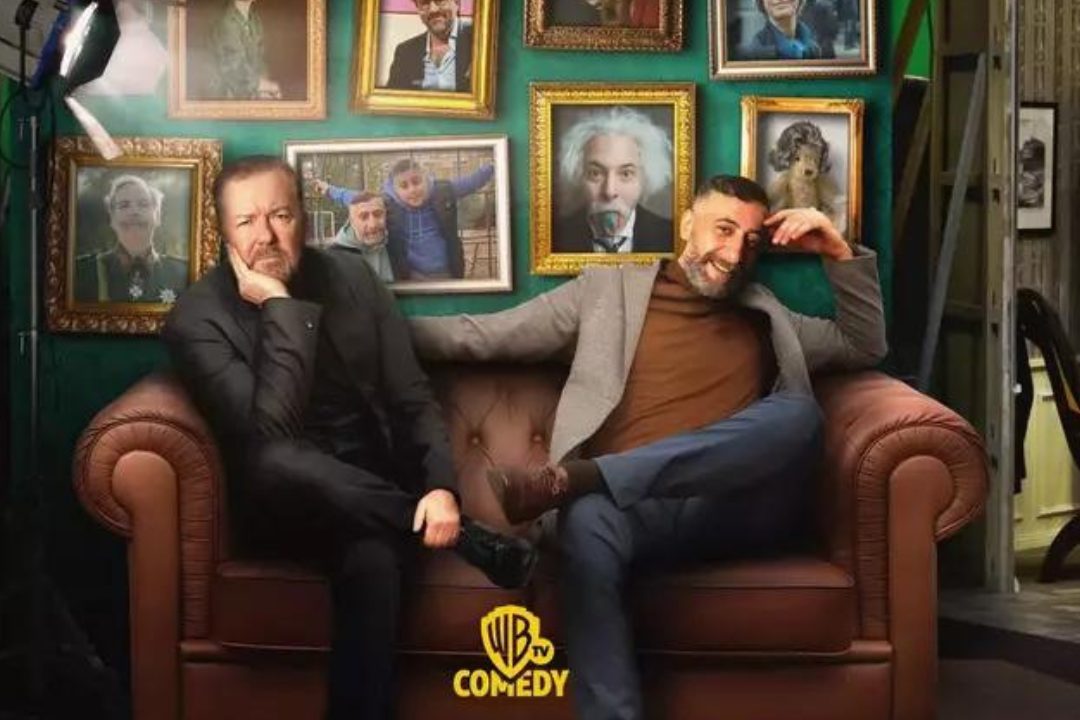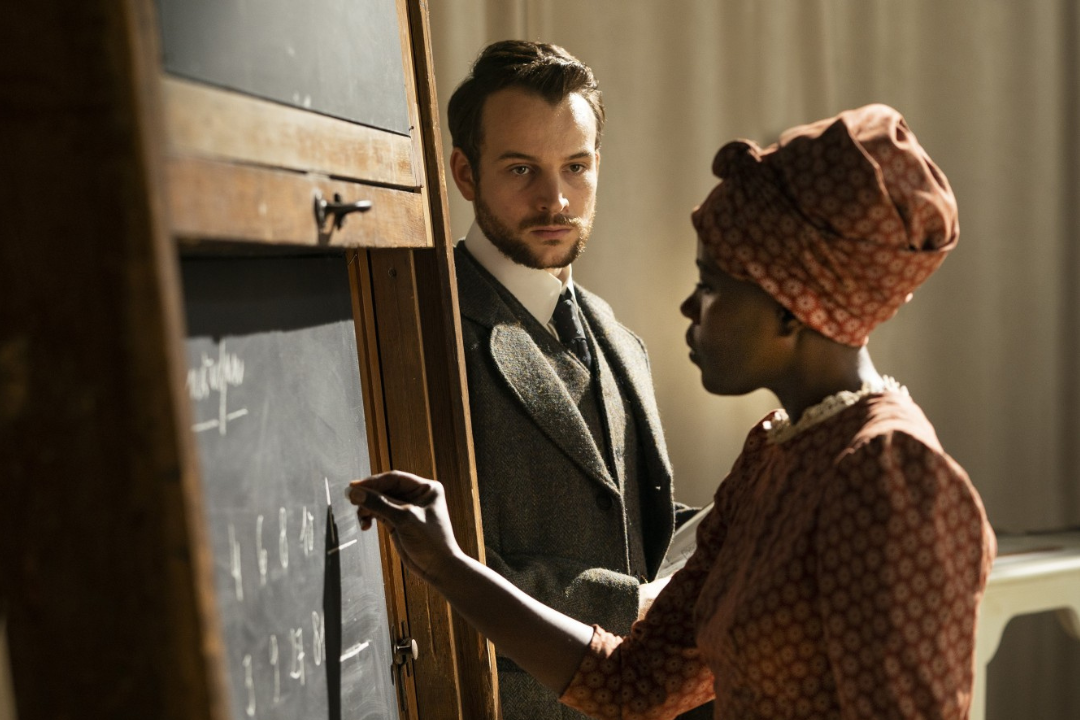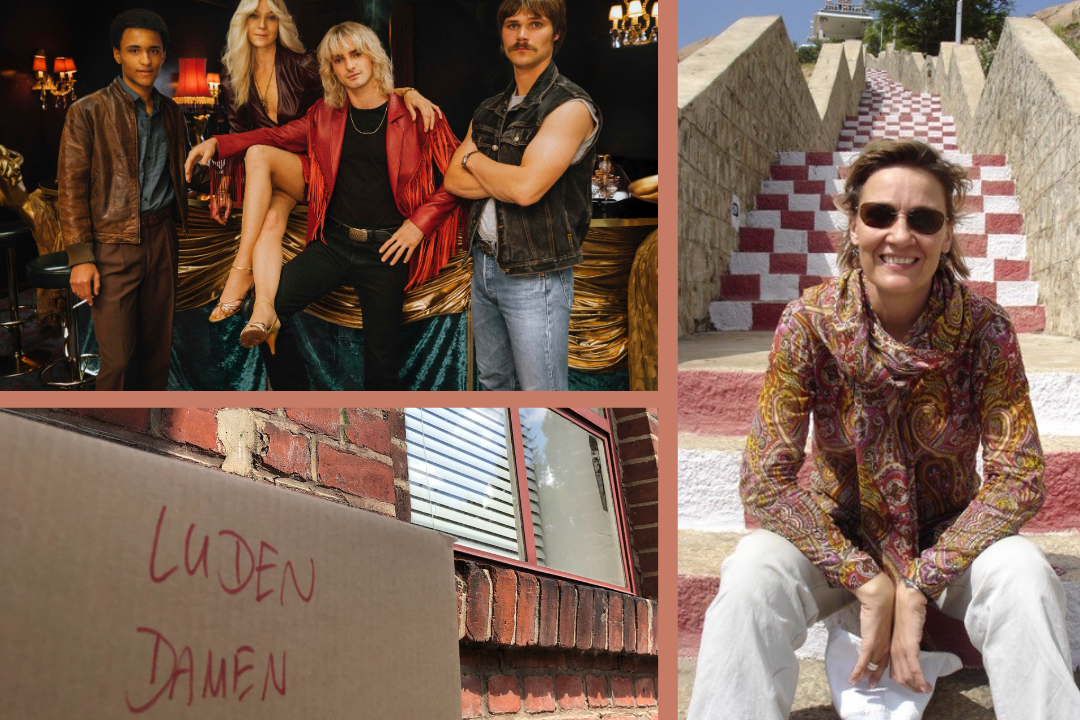Theaterkunst Talk
Stefanie Bieker
The documentary “Ich bin! Margot Friedländer” is currently being shown on ZDF-Mediathek. It tells the story of Holocaust survivor Margot Friedländer (born on November 5th 1921). Her interview statements form the leitmotif of the film, while enactments of key moments in her extraordinary life are embedded in historical film and photo material. Costume designer Stefanie Bieker and her team rented many of the costumes used to stage the scenes of this docudrama from our collection.
After having learned the trade of theater dressmaker and studying to be a master costume designer, she began a successful career as costume designer for film and television. She won this year’s Norwegian Amanda Award (Amanda Prisen) for “Best Costume Design” for the German-Norwegian feature film “War Sailor”. Prior to that she was nominated for the German Film Award and the Danish Film Awards, and has received a European Film Award as well.

© UFA
Theaterkunst
Stefanie Bieker
What made the project “Ich bin! Margot Friedländer” so special for you and your team?
The docudrama (director: Raymond Ley, writer: Raymond Ley, together with Hanna Ley) depicts staged scenes as a mosaic of memories alongside archival images from the years 1939 to 1945, as well as footage from 1990s New York. The fictional moment in the story follow Margot Friedländer’s recollections of her life as a young woman and a Jew in Nazi Germany and her experiences living in hiding and subsequently surviving Theresienstadt. The particular challenge for the docudrama, also in terms of costume design, was to build a bridge to the present day, as opposed to creating museum-like images, with all of the distance that goes along with that. The film’s particular costume design was meant to bring out the visual connection between documentation and fiction. Raymond Ley’s idea to project archival images onto the face and costumes of the actress (Julia Anna Grob) links these two layers. Despite all the situations she faced, Margot Friedländer always maintained an incredible life-affirming attitude, and her appeal to peaceful coexistence is as relevant as it ever was.
There was a private photo, for example, showing her in hiding after her nose operation, holding a crucifix. Her clothing style in that image was what I used as a reference for that chapter of her life in hiding.

How did you prepare when it came to creating the costume design for the docudrama? Were you able to meet Margot Friedländer beforehand, and could you make use of her private photos, for example?
Yes, once the preparation phase began, we starting doing extensive research. A lot of the photos struck us as being very modern. The film shows unknown chapters of Margot Friedländer’s life, for example her involvement in the costume department of the Jüdischer Kulturbund (Cultural Federation of German Jews). While she was there she also appeared as an extra in various productions. Thanks to the fantastic work of Nikola Fölster and her very detailed research, we found extensive photo material from the Kulturbund in the archives of the Akademie of Arts Berlin.
What were the particular challenges for the costume department?
The focus of the staged scenes was on the people in their costumes, which in all of their details recount the respective period of time, whether it’s in theater costumes evoking the colorful world of the theater and behind the scenes, or the oversized scavenged patchwork dresses that tell of a destitute life in hiding. It’s a tough challenge, and one that is often underestimated, to design the costumes in such a way that you don’t see the dust from storage and the creases from dry cleaning, and to credibly put historical costumes on modern faces, postures and movements. That can mean adapting the cuts and thus the freedom of movement and materials to accustomed modern visuals and styles. This job would not have been possible without the outstanding work within the costume department, made up of research and expert consultants, costume assistants and colleagues from the set costume department, wardrobe masters and mistresses and tailors, and of course the crucial work of the textile artists Constanze Schuster and Stefan Heinrichs, who brought all the costumes to life before shooting by working in realistic signs of wear and tear.

Last summer you won the Amanda Prisen award for “Best Costume Design” for the film “War Sailor”. How did you manage to make the costumes for that film so authentic?
Also for “War Sailor”, which is now available as a miniseries on Netflix, I spent a long time doing research. Successful cooperation always begins with trust in each department. In Norway, the respective departments work very autonomously, and director Gunnar Vikene gave me a lot of leeway to develop a visual language for the “textile architectures” of the individual characters. I also had a wonderful team of specialists involved in designing the costumes for the outstanding actors and actresses. The Norwegian producer and the producer from Malta gave me great support during the very long production phases. It’s quite rare for original work clothes worn by machinists, technicians, officers and sailors to have survived, so we had to make a large part of the sailor’s work clothes ourselves. The “authentic” feeling comes about because the actors, starting with the first readings, embraced and “owned” their individually made costumes, and with their mixture of original, partially repurposed materials and cuts, really cultivated the feeling of the 1940s. At the same time, the costumes transported the respective profession and its functionality. Fittings and character development went hand in hand, from the search for appropriate shoes and hats right down to the smallest detail like a ring or those scratchy socks with their traditional embroidery from a specific region that gave the sailors’ feet a Norwegian sense of homeland.
And with all of that, time is a decisive factor! As costume designer, you have to start preparations early, coordinating your team with the director, camera, production design, make-up department and VFX supervisor in order to develop the respective overall concept. In my opinion, that is a key prerequisite for achieving a coherent visual language for the film as a total work of art. In Denmark, this kind of joint conceptual work is a key component of film funding in the project development phase. It’s an approach that ultimately saves money, time and CO2.
How important is the aspect of “green costume design” for you, and what role does a costume collection play in that?
A costume collection is an important partner with regard to the CO2 footprint that our work leaves. This is where I have to become political again: If we are serious about “green film shooting”, then for a start, film funding law should establish a bonus system for local rental agencies. Costume collections are dying off in Germany because small companies can no longer afford the steep increases in rent and operating costs. These companies, just like the traditional crafts businesses, need to be supported, not least of all because they work in a sustainable fashion and have excellent qualifications. For me as a costume designer, it’s essential to have a variety of sources and to have choices when it comes to realizing projects. During preparations for War Sailor, we were dealing with travel restrictions as a result of Corona. With all of those complicated requirements, we were lucky to have had the manufacturing done in Germany. That meant short distances that facilitated personal communication, the ability to respond quickly to the ever-changing situation, and all of the trades being able to work hand-in-hand. That saves resources and, in end effect, money as well.
Can you tell us anything about your current film project?
I’m committed to building sustainable structures for qualified dual-track vocational training for the different professions in the costume business in Germany. The visibility and acceptance of our department in the overall structure of the film team begins by ensuring good qualifications in individual jobs like set costume designer, costume assistant and costume supervisor.
With the help of VSK, the Association of Set Design and Production Design Professionals, we founded an initiative aimed at promoting young talent for the film professions (IN FILM) and are working together with other associations to develop concrete concepts for dual training programs in the film business. That takes a lot of time and personal commitment.
I’d also like to use this opportunity to invite all of my colleagues to become members of the VSK in order to engage in exchange with other colleagues and provide support in a joint effort to heighten our visibility in the long term and improve working conditions.
What would you like to see in the future when it comes to the preparation for your projects?
We had the wonderful opportunity to prepare the Margot Friedländer project on the premises of Theaterkunst, and thanks to the fantastic infrastructure here and the support of the staff, we were able to get through the fitting phases. So thank you for that!
I’d like to see the broadcasters and producers incorporating the expertise of the professionals, the heads of department, into their calculations ahead of their productions. Then the discrepancy between what is expected of the creative trades and the reality of the budget would not be so glaring. And it would be nice if during the preparation phase we had all the information we needed to do our work well – that would begin with accurate measurement specs…
Do you still enjoy your job after 30 years?
Yes, definitely. It’s the attention to detail, the possibility of taking the close observations of images and people and all their stories and weaving them into costumes.
Thank you for taking the time to speak to us. See you soon at Theaterkunst!
Yes, see you soon!














